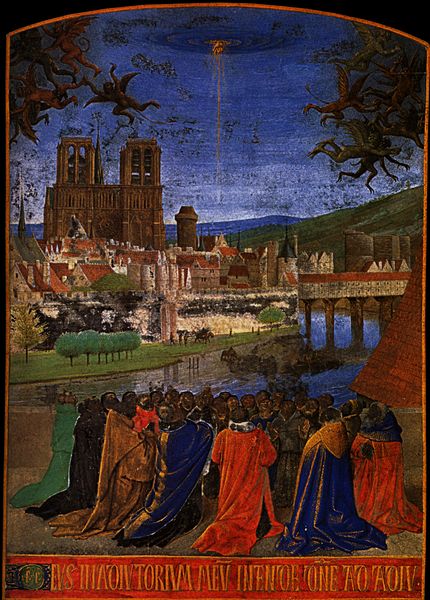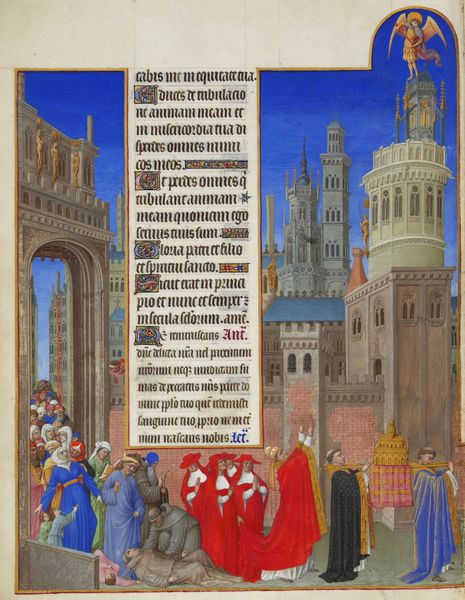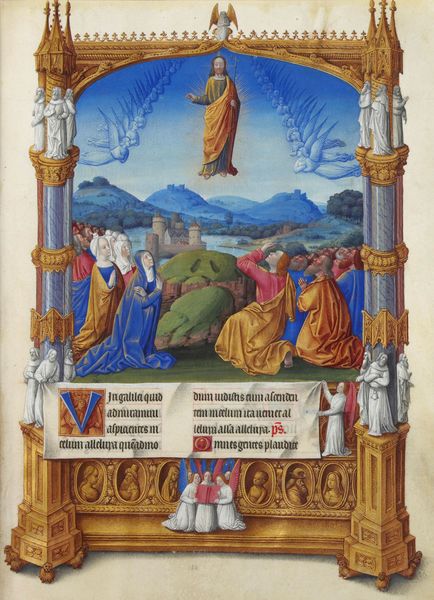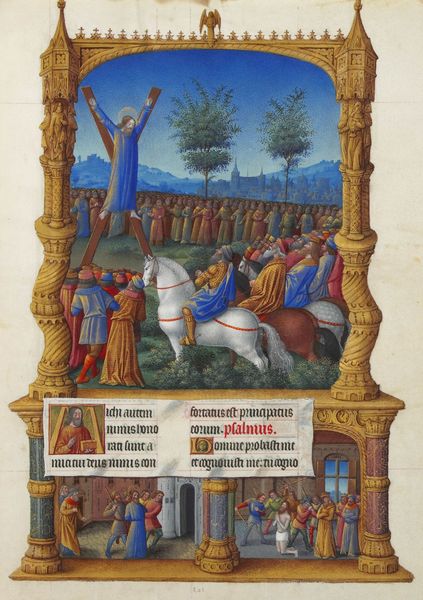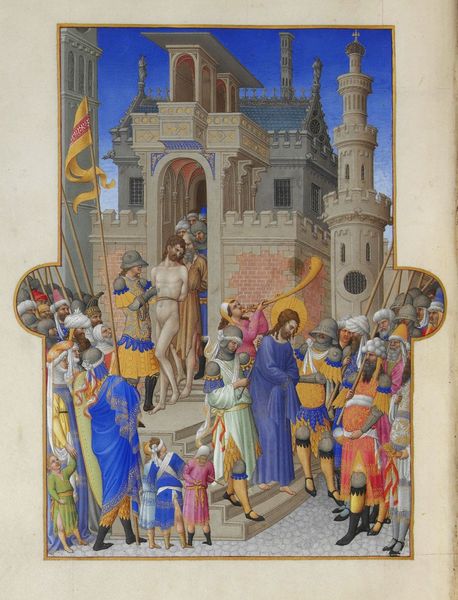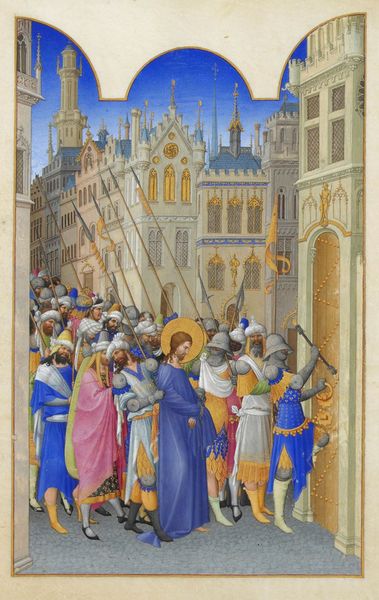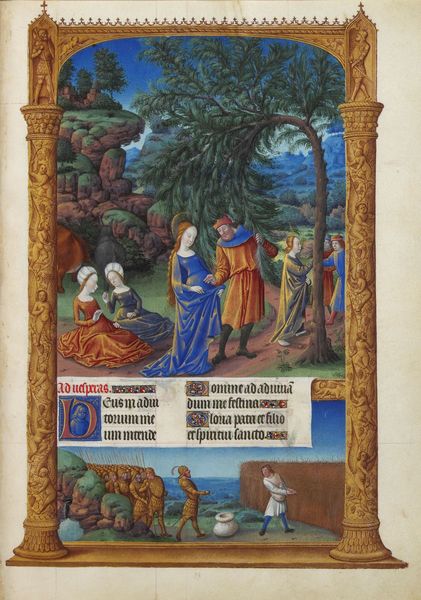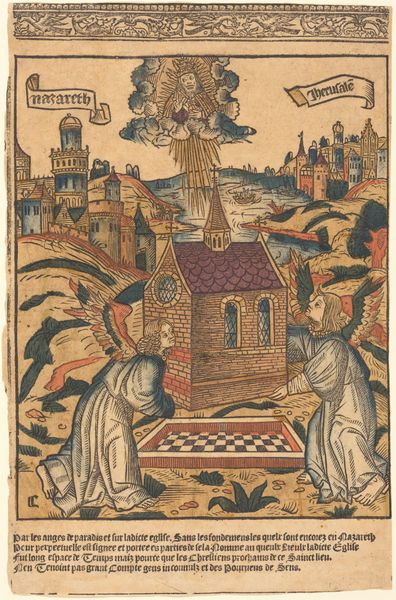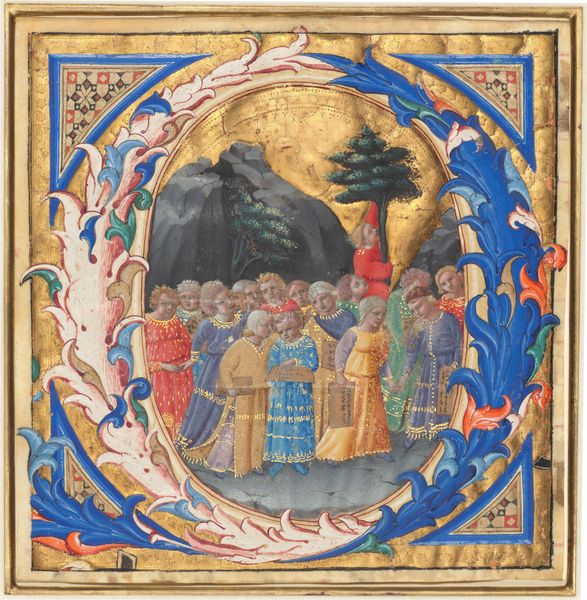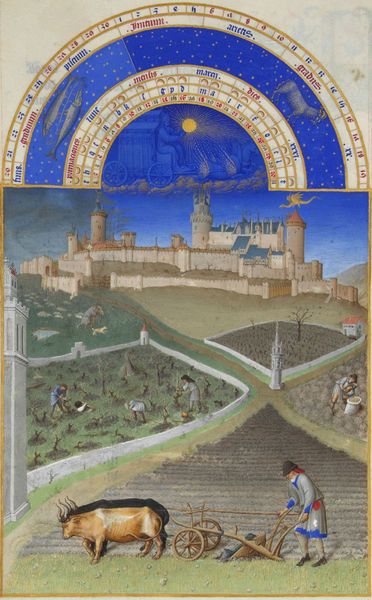
The Right Hand of God Protecting the Faithful against the Demons 1449 - 1463
0:00
0:00
tempera, painting
#
water colours
#
tempera
#
painting
#
gothic
#
landscape
#
history-painting
#
international-gothic
#
mixed media
#
miniature
#
watercolor
Dimensions: leaf: 7 5/8 x 5 3/4 in. (19.4 x 14.6 cm)
Copyright: Public Domain
Editor: This is Jean Fouquet's "The Right Hand of God Protecting the Faithful against the Demons," created between 1449 and 1463 using tempera and watercolor. It’s quite small, a miniature almost, yet packed with so much detail. The contrast between the heavenly light and those terrifying demons is striking! How would you unpack the making of this artwork and what do you see in it? Curator: Look at how Fouquet uses tempera – egg yolk and pigment, often made by workshop assistants - to create such brilliant, enduring colors. Think about the social context: religious workshops producing for wealthy patrons, employing specialized labor. Notice the landscapes carefully built by the artist in successive layers of colors which add up to define urban spaces; what are your thoughts on this treatment? Editor: It is interesting. The landscape is stylized, not exactly photorealistic but incredibly informative. It allows the painting to almost document the context. So, it's about labor and material conditions, not just individual genius? Curator: Precisely. Consider the price of pigments, the skill required to grind and mix them, the value placed on ultramarine derived from lapis lazuli, a literal gemstone turned into paint. Fouquet wasn't just divinely inspired; he was directing a complex system of material production. What can you tell me about the Gothic Art present here, if we consider what has been said about the labour and means to produce such a work? Editor: The Gothic element with an elongated vertical style emphasizes divine reach but seems to clash with that very grounded portrayal of labour and materials... Curator: Does it? Or does it highlight how even faith and divine protection are mediated by human hands, earthly resources, and social hierarchies? Labor is needed to produce, create and represent; a costly process to reach a larger message. Editor: That's a fascinating point. It brings a whole new perspective to how I understand art of this period. Thinking about art in this context of production makes it feel more accessible and understandable.
Comments
No comments
Be the first to comment and join the conversation on the ultimate creative platform.
